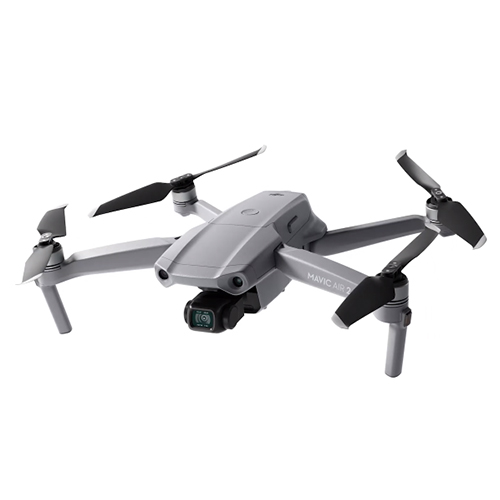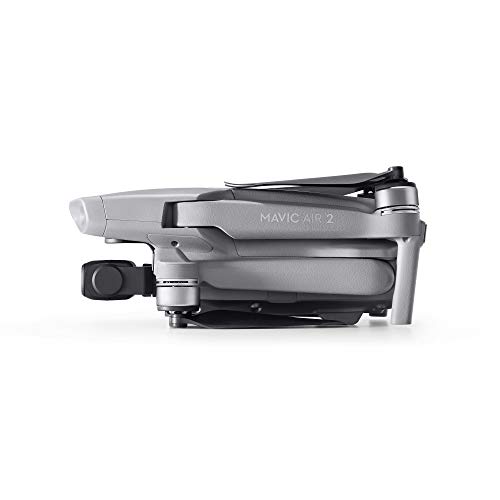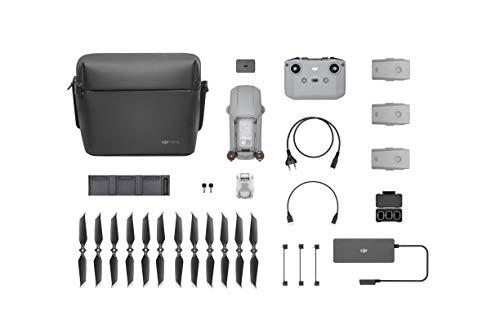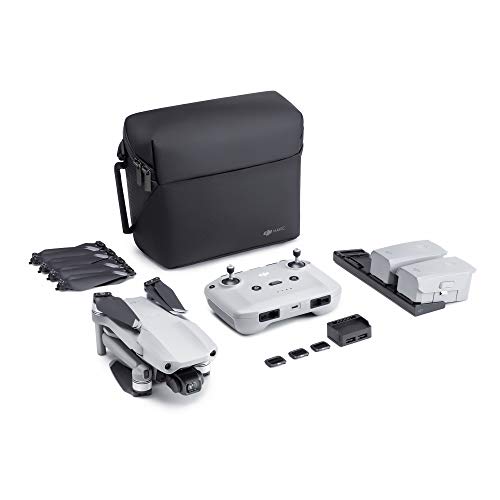Description
The all-new Mavic Air 2 design looks like someone has blown up the Mavic 2 series with a shrink beam, and it also comes with a new controller. But with many new features and technologies, it’s not just a big brother clone – DJI claims that the Mavic Air 2 is also the smartest unmanned aerial vehicle to date.
All aspects of the Mavic Air 2 – from the drone to the application that you use to control the camera and flight settings – have been redesigned for ease of use.
Deficiencies in the design and performance of the original Mavic Air model, and indeed the Mavic 2 Pro, have been eliminated. Although the Mavic Air 2 is not perfect, it certainly sets a new standard for what we can expect from DJI drones in the future.
RELEASE DJI MAVIC AIR 2.
DJI Mavic Air 2 is available for pre-order right now in the DJI store, delivery is expected in mid-May.
DESIGN AND CONTROLLER.
DJI Mavic Air 2 could not look or feel more unlike its predecessor. The drone has been completely redesigned to provide significant improvements in all areas, including image quality, speed and flight time.
Outside, the Mavic Air 2 looks like a miniature DJI Mavic 2 Pro and has the same folded design, in which the front levers sway and the rear levers turn down and out for flight.
This means that the Mavic Air 2 measures, when folded, the tiny dimensions of 180 x 97 x 84 mm, which is roughly equal to a 500 ml bottle of beer, and only 183 x 253 x 77 mm when unfolded.
Weighing 570 grams, this is slightly more than half the weight of the Mavic 2 Pro, which makes it a very portable and really powerful unmanned aerial vehicle for both photographers and filmmakers. Depending on where you live, it is worth noting that this also means that you may have to register your Mavic Air 2
With the folding design of the Mavic Pro series, the Mavic Air 2 sits low on the ground with its rear brackets. This means that when taking off on grassy areas, it is necessary to find an even area with short grass to avoid cutting grass during takeoff and landing.
This can lead to unpredictable flights, and at worst – to accidents. For this reason, it is worth taking along a small landing mat that can be attached to the ground to provide a clear and safe take-off zone. On harder, flatter surfaces such as asphalt and concrete, this is obviously not a problem.
Unlike the folding controller that was used by all previous and current Mavic drones, the Mavic Air 2 controller is larger in size and has no folding design – it looks like a smaller version of the DJI smart controller, but, unfortunately, without a screen.
This new shape is comfortable to hold in hands thanks to the contour grips on the back and a weight of 393 g. The controller also starts up and connects to the aircraft faster than the previous one.
Thanks to the new design, the phone is attached to the top of the controller using a telescopic handle that will conveniently accept phones of all sizes, including the factory. The telephone jack cable is connected inside the cavity where the top of the phone holder is laid away when not in use, and there is a slot to insert the end of the phone when not in use, to keep the cable neat and out of the way.
This is a good touch, but the cables are too long for design, so inserting the telephone end of the cable into the storage space puts pressure on the cable, which could potentially damage the cable over time. The control sticks are stored in rubberized sections at the bottom of the controller, and there are two more spare parts in the box.
As for direct access, the controller offers only a few joysticks, including flight control joysticks, a flight mode switch for switching between a tripod, normal and sports modes, a Return-to-Home button, a button for switching from photo to video, one FN button, a button shutter release, gimbal control dial and button for turning the controller on and off.
This minimal layout means that most camera controls are accessed through the new DJI Fly app.
FLIGHT FEATURES
The Mavic Air 2 is equipped with new engines, new electronic speed controllers, improved battery technology, and improved aerodynamics. The combination of these characteristics provides an increased flight speed of up to 42 mph in sport mode and a flight time of up to 34 minutes.
This is significantly longer than the original Mavic Air flight time by 21 minutes and even three minutes longer than the Mavic 2 models. Although this doesn’t sound like much, you really noticed an increase in flight duration and a slow battery drain. The controller also provides a longer battery life compared to its predecessor.
Flying on the Mavic Air 2 is as simple as on any other DJ drone, thanks to the intelligent technology used. Not least thanks to the inclusion of OcuSync 2.0, which is a much more advanced method of transferring data between the controller and an unmanned aerial vehicle than the one used in the original Mavic Air.
OcuSync 2.0 supports 2.4 GHz and 5.8 GHz frequencies and can switch between them if necessary. Anti-jamming technology also helps block unwanted signals.
Despite all this new and improved technology that supports communication between the drone and the controller at a distance of 10 km, the Mavic Air 2 video channel still stutters and instantly blocks while the drone continues to move.
It was a problem with the original Mavic Air, and although this is not the end of the world, it can slow you down when cropping pictures. Perhaps this is due to the pre-sale version of the new DJI Fly application that we used for this review, so maybe in the future, we will update this review with firmware or application updates – if so, we will update this review.
From a safety point of view, the Mavic Air 2 is equipped with obstacle sensors on the front and rear of the drone, which when turned on can help avoid collisions. They are turned on by default, and for most people, keeping them turned on is the best option.
In addition, sensors are installed at the bottom of the drone along with auxiliary lighting to assist in automatic landing, which are similar to sensors installed on Mavic Pro models. Another safety feature is the geodesic fence, which will prevent the unmanned aerial vehicle from flying near places with a high degree of risk and safety, such as airports and critical infrastructure.
The security functions do not end there either. You also get an advanced pilot assistance system (APAS) 3.0, which when turned on redirects the unmanned aerial vehicle when obstacles appear in its path. The idea is that pilots can confidently fly in more difficult places without fear of crashing.
And there is AirSense technology – the first for a drone DJ – which uses ADS-B technology to receive signals from nearby planes and helicopters and display their location on the screen map in the DJI Fly application. This technology has been used to reduce the risk of air intrusion, although, unfortunately, it will initially only be available on Mavic Air 2 aircraft in North America. DJI says that “the Mavic Air 2 version will be available outside of North America without ADS-B” and that otherwise, the models are identical.
In addition to safety improvements, Mavic Air 2 has inherited from Mavic Pro 2 and professional unmanned aerial vehicles many advanced features that provide intelligent capabilities in automatic flight modes for taking photos and videos.
These include FocusTrack, Hyperlapse (up to 8K), and four flight options; Free Move, Circle, CourseLock, and WayPoints.
In addition, there are automatic “QuickShot” flight modes (equivalent to “automatic” camera mode) that help create visually interesting videos with the click of a button. These include Rocket, Circle, Irony, Spiral, Boomerang, or Asteroid.
PHOTO AND VIDEO QUALITY .
The image quality of the Mavic Air 2 has improved significantly compared to the previous model. This is partly made possible by the new 12-megapixel 1/2-inch Quad Bayer sensor, which provides significantly cleaner images at all ISO levels. However, as with all unmanned aerial vehicles with small sensors, noise is noticeable even at ISO 100, so the ISO 400 is realistically the highest setting you would like to use.
The camera lens provides a 24mm full-frame equivalent focal length with a fixed f / 2.8 aperture. But, despite this limitation and setting the lens focus to hyperfocal distance, the depth of field is large enough to maintain the sharpness of landscape scenes near and even at depth.
Images are the sharpest in the center of the frame, and the drop is discarded the closer to the edges of the image. This is the same as all Mavic drones, but the sharpness at the edges of the Mavic Air 2 is significantly improved over the previous model.
For photographers, several functions have been developed that will help you easily take better pictures. But, like the scene modes on compact cameras and entry-level digital SLR cameras, if you are an experienced photographer, you can achieve better results when shooting in Raw (DNG) mode and using manual shooting and editing methods instead of functions. All of the functions below allow you to create JPEG files, not Raw.
HDR photographs record seven exposures in brackets, which are then combined into a camera to obtain an image with detail from shadows to highlights. This can also be achieved by shooting raw and using the AE mode in bracketing before processing images in HDR software.
Hyperslight is a low-light shooting mode that combines multiple images to average and reduce noise. This can be achieved manually by shooting several raw images and putting them in Photoshop.
Finally, Scene Recognition is a mode that can recognize five types of scenes – sunsets, blue skies, grass, snow and trees, and optimizes settings when processing in a JPEG camera for each of them. Again, this can be achieved manually in a Raw processing program such as Adobe Lightroom. But the great thing is that no matter how experienced you are in photographing, each of you will be taken care of.
Another highlight is the ability to take 48-megapixel photos with a 12-megapixel sensor. The output images made in this mode are in JPEG format, and the results, unfortunately, are much softer than the files of the Raw format and standard JPEG size, plus the images look washed and saturated in comparison with them.
This suggests that 48 megapixel images are created using the intra-chamber interpolation algorithm. If larger images are required, Photoshop provides better interpolation results in the Image Size dialog box using the Save Detail Sample option.
For videographers, Mavic Air 2 brings with it some of the first for DJI and even features not found in the flagship Mavic models, such as 4K video at 60 frames per second and slow motion video up to 240 frames per second at 1080p. So, despite the small size, in certain situations, of course, there is the possibility of professional use of this drone in video recordings.
Video can be shot in a standard format, so the video is equivalent to JPEG, or in the more neutral D-Cinelike profile, which displays more detail in shadows and light colors and requires color gradation.
HDR video is also available in 4K, 2.7K and FHD at speeds up to 30 frames per second. 4K video is available at up to 60 frames per second, 2.7K at 60 frames per second and FHD at up to 240 frames per second. Video can be shot in MP4 / MOV format (H.264 / MPEG-4 AVC, H.265 / HEVC) with a maximum speed of 120 Mbps.
Conclusion:
In general, DJI Mavic Air 2 is the best universal model for non-professionals, because it has a much wider range of modes (including tracking objects) than the Mavic Mini. And while the Mavic 2 Pro and Zoom respectively offer more advanced sensor and zoom capabilities that you can’t find on the Mavic Air 2, the latter now offers much better value for money.








